When the Ferrari FF was first introduced in 2011, it represented a groundbreaking moment for the brand. Ferrari, known for its high-performance sports cars, ventured into uncharted territory by creating its first four-wheel-drive production car, blending the essence of a grand tourer with the capability of a daily driver. The FF, short for "Ferrari Four," refers to its four seats and four-wheel-drive system.
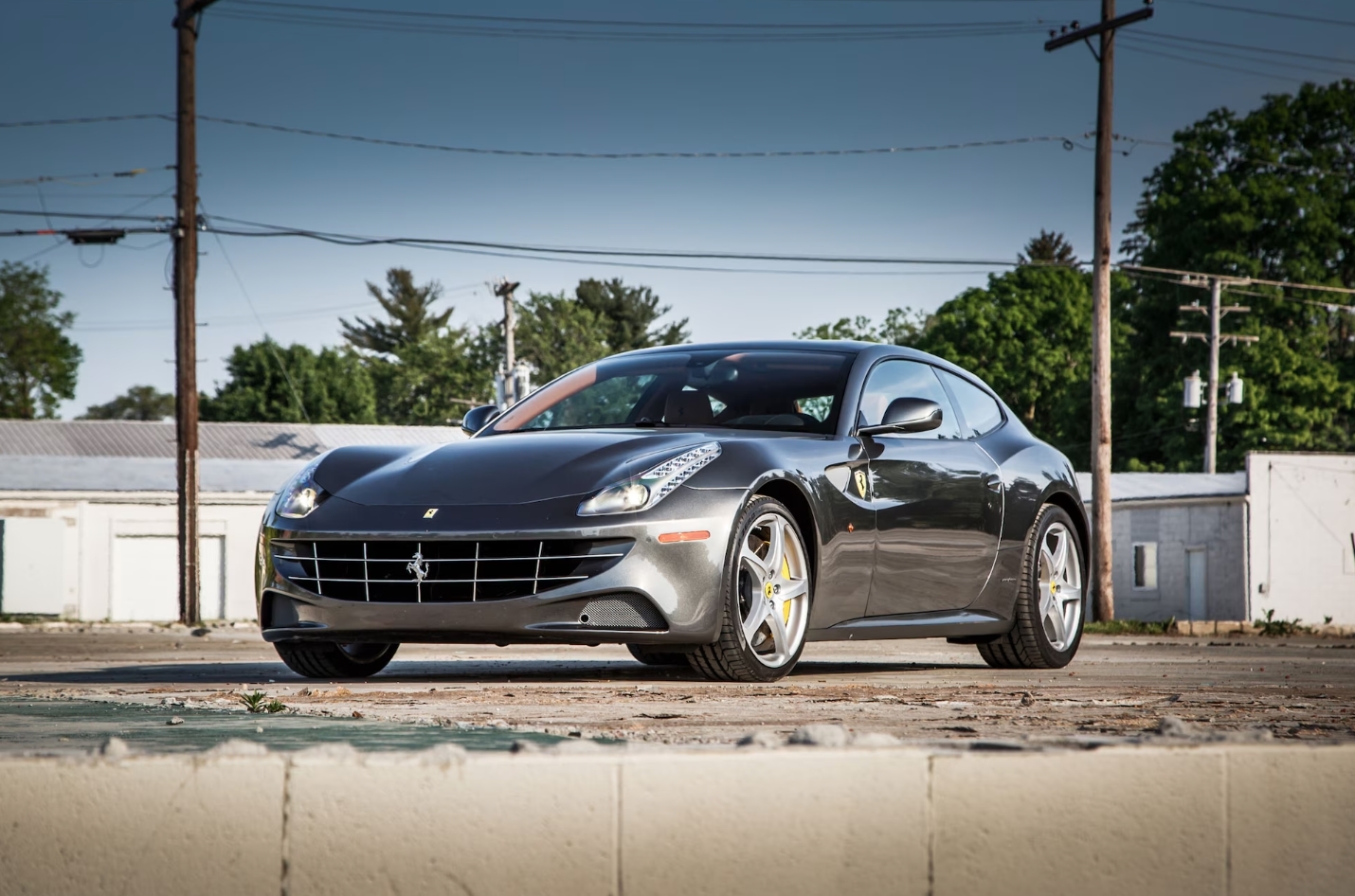
Photo by Motor Trend
At the heart of the Ferrari FF is a 6.3-liter naturally aspirated V12 engine, delivering an exhilarating 651 hp and 504 lb-ft of torque. This powerhouse enables the FF to accelerate from 0 to 60 mph in just 3.7 seconds, with a top speed of 208 mph.
Paired with a 7-speed dual-clutch automatic transmission, the FF’s innovative 4RM (four-wheel-drive) system ensures that power is seamlessly distributed to the wheels without compromising the car’s weight balance, maintaining the driving dynamics Ferrari is famous for.
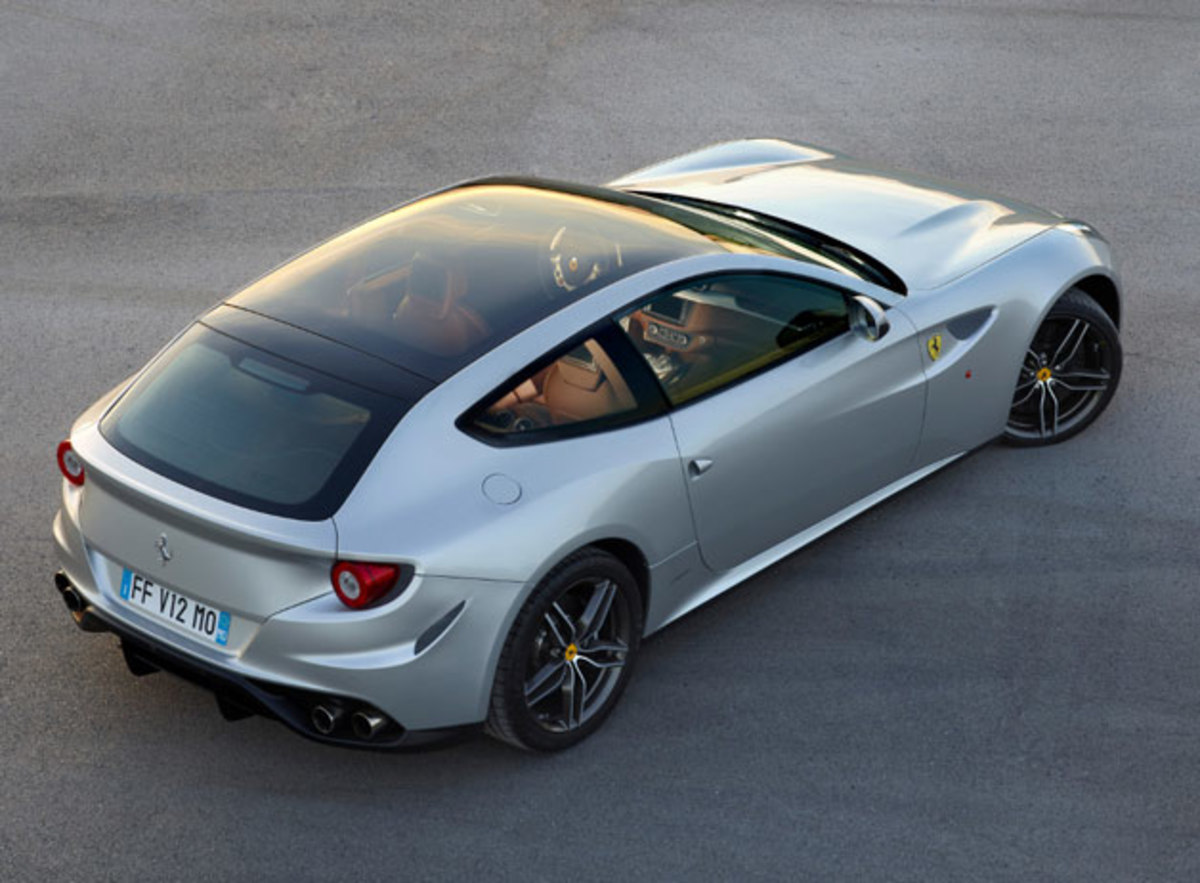
Photo by Autoblog
The exterior design of the Ferrari FF is as bold as its performance. The shooting brake body style, with its extended roofline and muscular proportions, offers a blend of elegance and aggressiveness. The long hood, sculpted side panels, and aerodynamic contours give the FF a dynamic stance, while details like the large front grille and distinctive rear taillights showcase Ferrari’s design heritage.
Extensive use of lightweight materials such as aluminum contributes to the car’s performance and handling, ensuring it remains nimble despite its size.
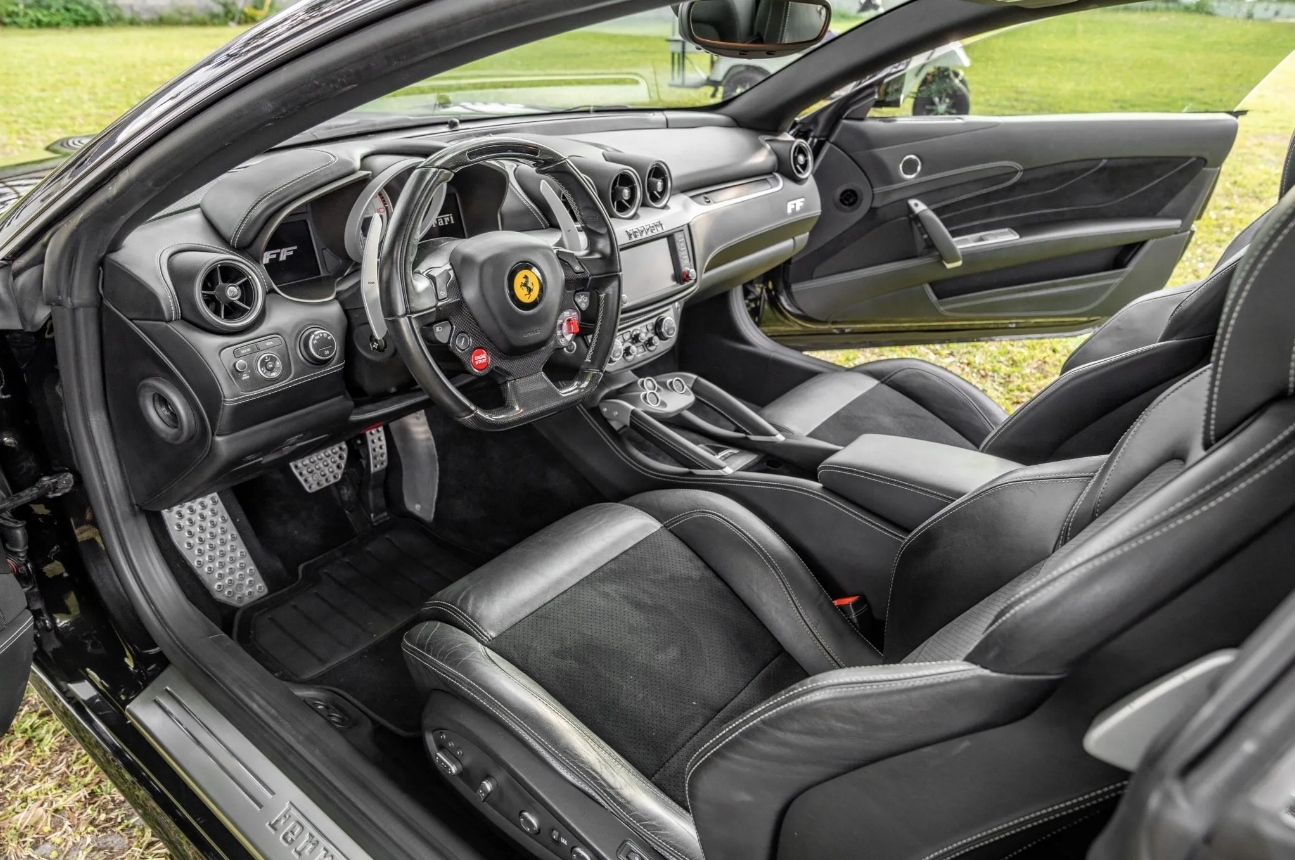
Photo by Bring a Trailer
Inside, the Ferrari FF is covered with high-quality leather, carbon fiber accents, and aluminum trim, creating a sophisticated yet driver-focused environment. The four-seat layout ensures that all passengers enjoy ample space and comfort, making the FF a true grand tourer.
Modern technology, including a high-resolution infotainment system, premium audio options, and climate control, offers convenience without distracting from the driving experience. The spacious rear cargo area, unusual for a Ferrari, further enhances the FF’s practicality.
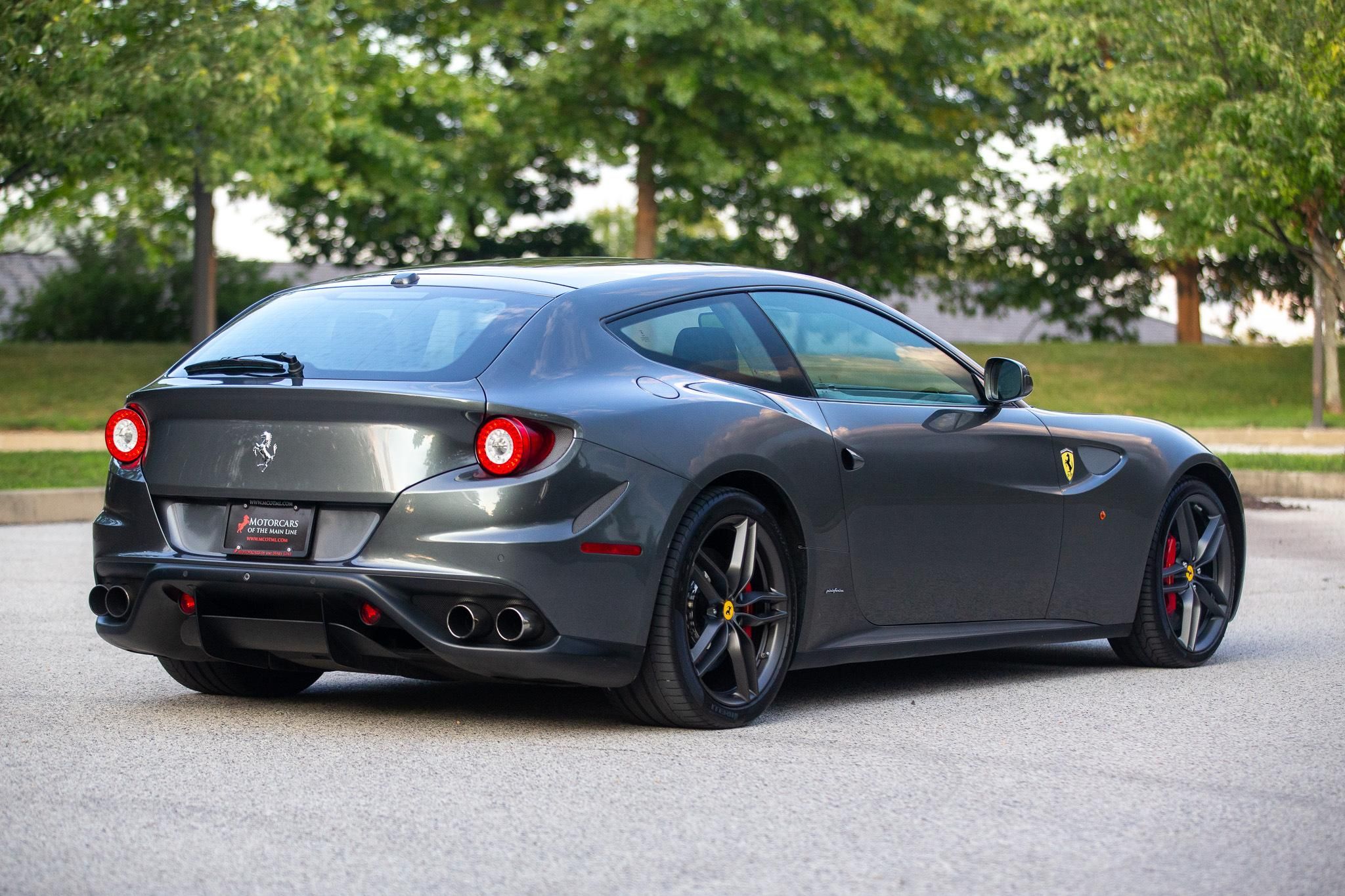
Photo by Cars and Bid
Throughout its production, the Ferrari FF faced competition from other high-performance grand tourers and luxury vehicles. Notable rivals included the Bentley Continental GT, Aston Martin Rapide, and Porsche Panamera Turbo.
However, the FF set itself apart with its combination of Ferrari’s legendary V12 power, four-wheel-drive capability, and everyday usability, making it a choice for enthusiasts who demanded both performance and practicality.
Model Changes (Breakdown by Year)
2011 Ferrari FF
In 2011, Ferrari launched the FF at the Geneva Motor Show, marking the debut of the brand’s first production four-wheel-drive vehicle, the 4RM. The FF was introduced as a shooting brake, and featured a 6.3-liter naturally aspirated V12 engine producing 651 hp and 683 Nm of torque, paired with a 7-speed dual-clutch automatic transmission.
Ferrari's proprietary 4RM system, which is about 50% lighter than traditional all-wheel-drive setups, ensured optimal performance without compromising weight distribution. Inside, the FF offered a luxurious cabin with leather upholstery, capable of accommodating four adults comfortably.
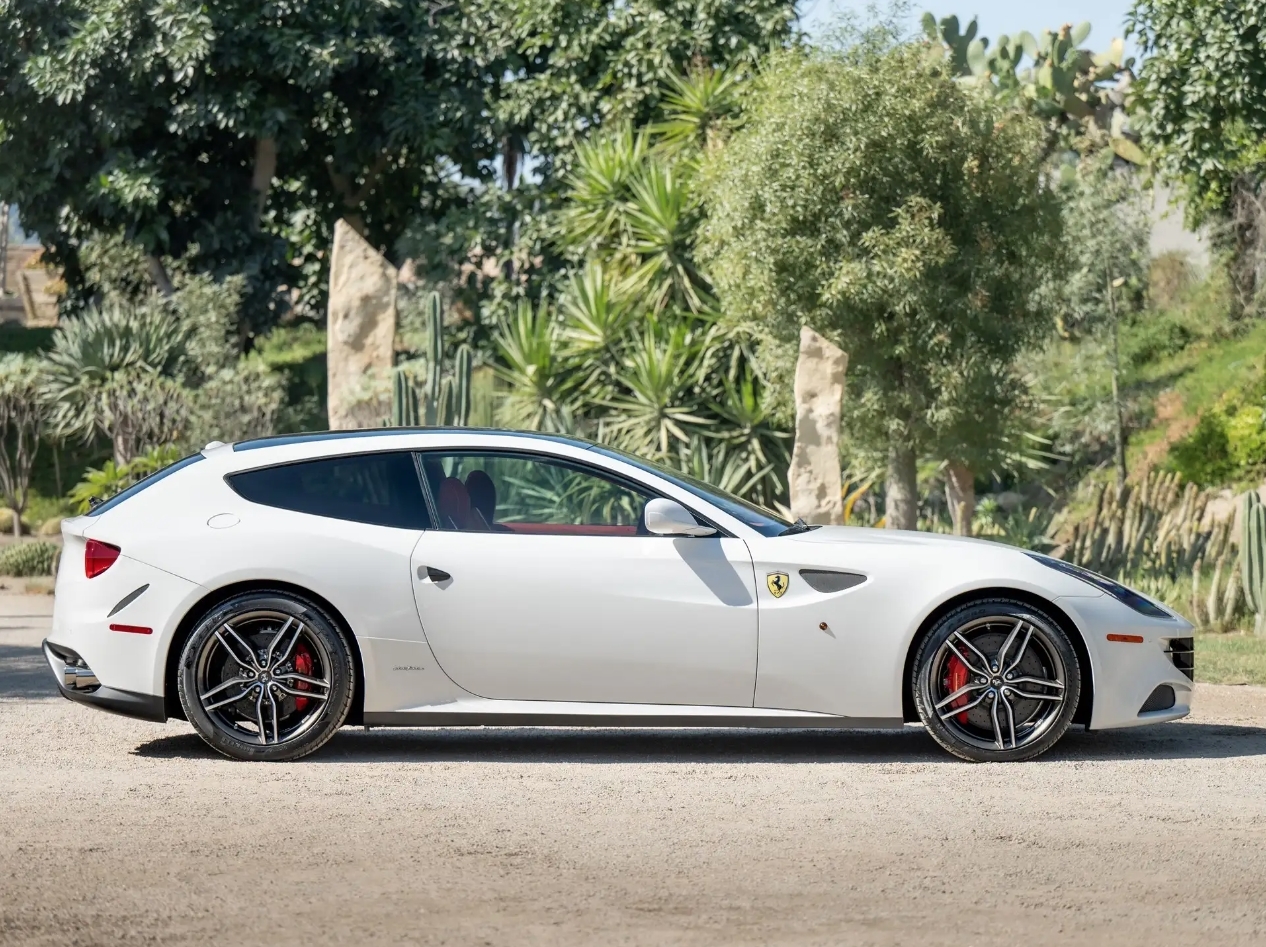
Photo by Hagerty
The spacious interior included a 450-liter trunk, which could be expanded to 800 liters with the rear seats folded. Key features of the FF included an advanced suspension system with Magnetorheological Dampers, carbon-ceramic brakes, and a refined infotainment system, further enhancing the driving experience.
The starting price of the Ferrari FF when it was introduced in 2011 was approximately $300,000.
2012 Ferrari FF
In 2012, the Ferrari FF remained largely unchanged from its debut model.
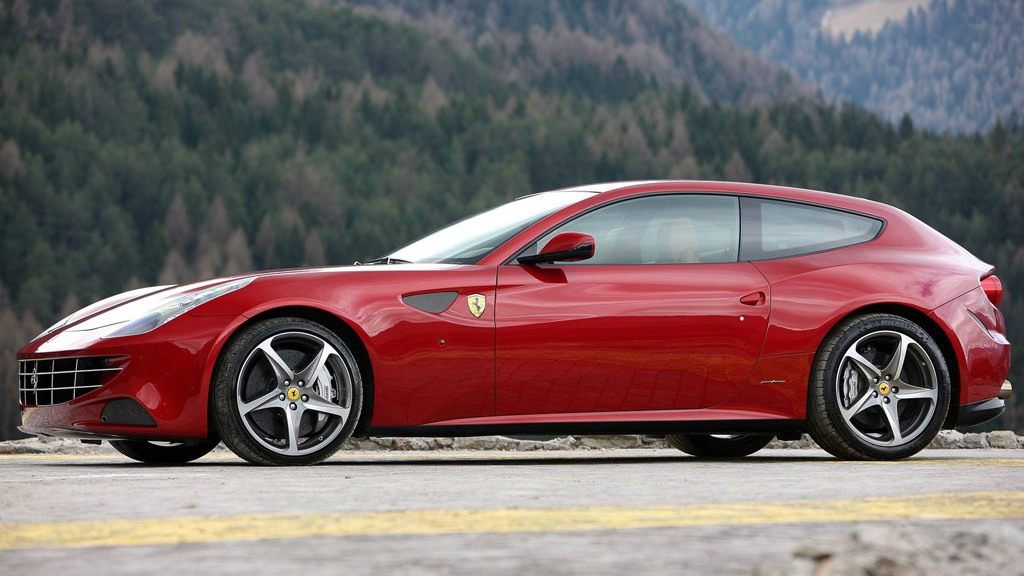
Photo by Motor Authority
Ferrari offered an extensive range of customization options for the FF in the USA and Canada through the Ferrari Tailor-Made program, allowing owners to personalize their cars to suit their individual tastes. Customers could choose from a wide selection of exterior colors, including classic Ferrari hues like Rosso Corsa and Giallo Modena, along with more unique metallic and matte finishes.
Several wheel designs were available, ranging from different spoke patterns to polished aluminum or dark alloy finishes, while brake calipers could be customized in colors such as red, yellow, black, or silver.
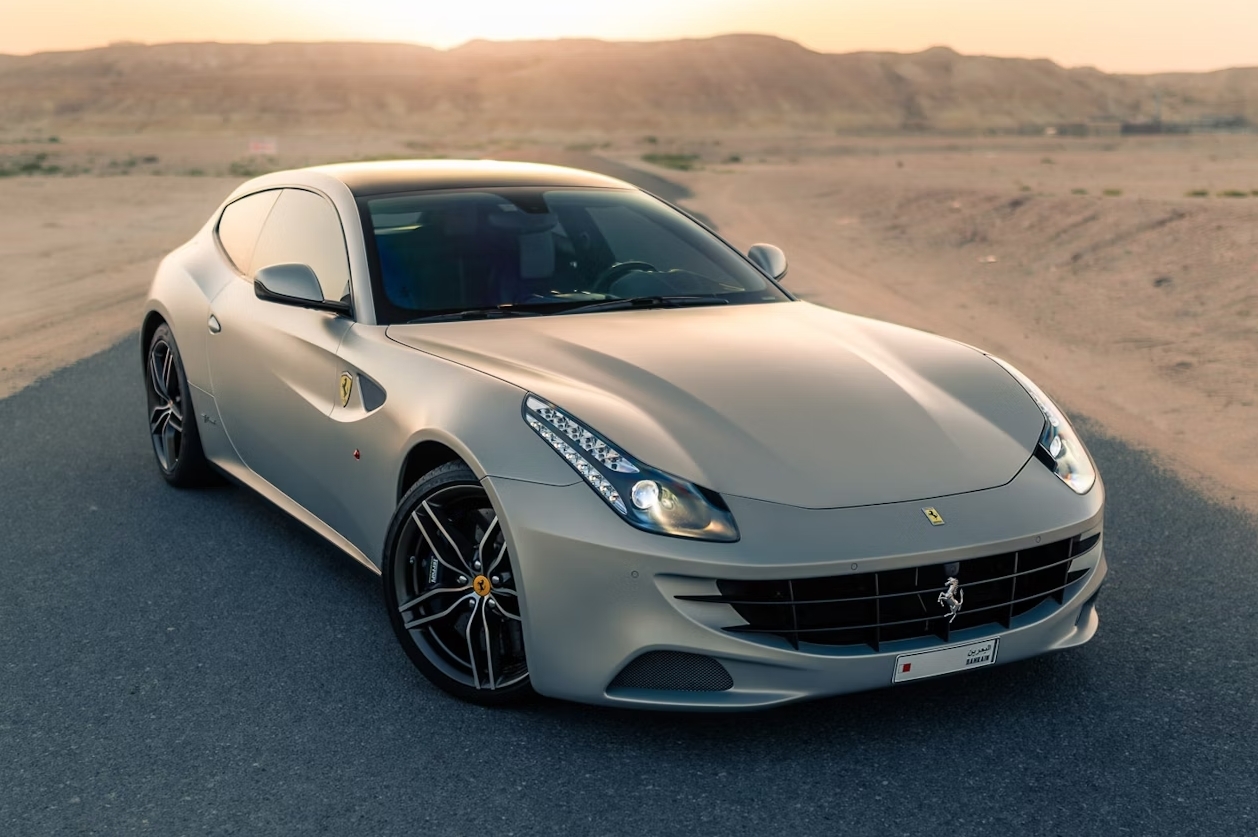
Photo by Collecting Cars
Inside the FF, a variety of materials such as leather, Alcantara, and fabrics were offered for the seats, dashboard, and door panels, with a vast array of colors available for each. For a sportier look, carbon fiber trim could be added to interior elements like the steering wheel and dashboard, while Alcantara was a popular choice for seat inserts, headliners, and steering wheels.
Owners could also select from different seat styles, with options for sportier designs or more luxurious, padded seats, and could add contrast stitching in various colors or have the Ferrari logo embroidered on the headrests.
The starting price for the 2012 Ferrari FF remained the same as the previous year at approximately $300,000.
2013 Ferrari FF
In 2013, Ferrari made a series of subtle but significant updates to the FF to enhance both the driving experience and personalization options. One of the key improvements was an upgrade to the infotainment system, which featured better user interface controls for easier operation.
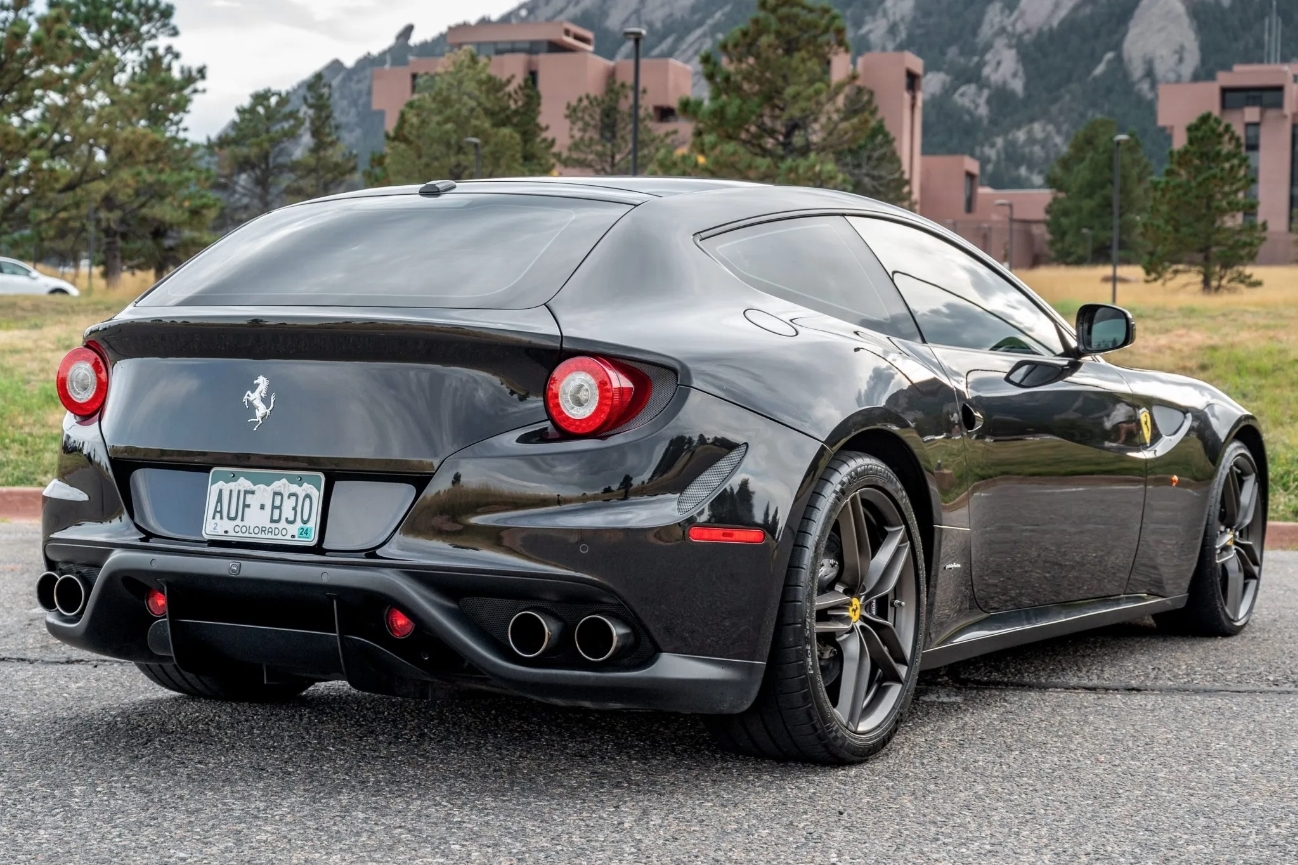
Photo by Bring a Trailer
Additionally, Ferrari offered optional advanced navigation features, allowing drivers to access real-time traffic data and more precise route planning, further improving the FF's usability as a grand tourer.
On the interior front, Ferrari introduced new leather and trim options to give owners even more ways to personalize their FF. These additional customization possibilities allowed drivers to create a more unique and luxurious cabin that suited their individual tastes. Whether through new materials or color combinations, the 2013 FF offered a more bespoke feel to its interior.
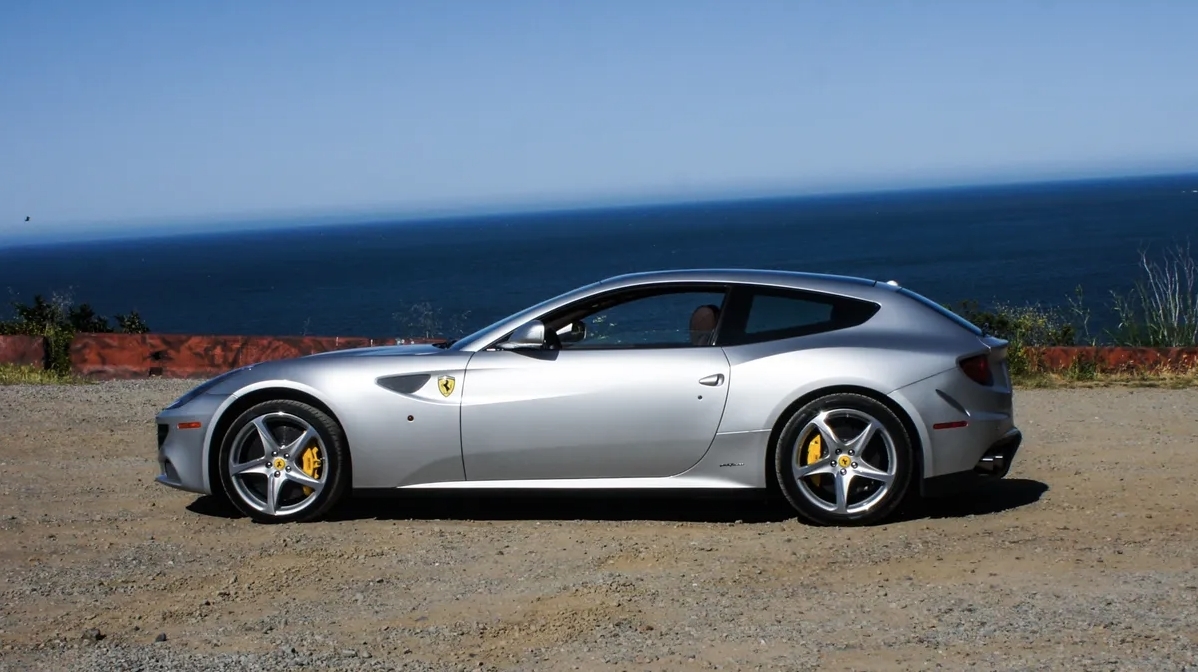
Photo by CNET
In terms of performance, Ferrari made minor adjustments to the electronic stability program (ESP), aimed at improving the car's handling and overall driving dynamics. These tweaks provided the FF with better stability and responsiveness, ensuring an even smoother and more confident driving experience across various road conditions.
The starting price for the 2013 Ferrari FF remained the same as the previous year approximately $300,000.
2014 Ferrari FF
In 2014, Ferrari expanded its personalization program for the FF, offering even more bespoke features to make each car truly unique. Customers could now choose from a wider range of unique paint finishes, as well as special interior materials such as Alcantara and carbon fiber trims, allowing for a greater degree of individual design touches.
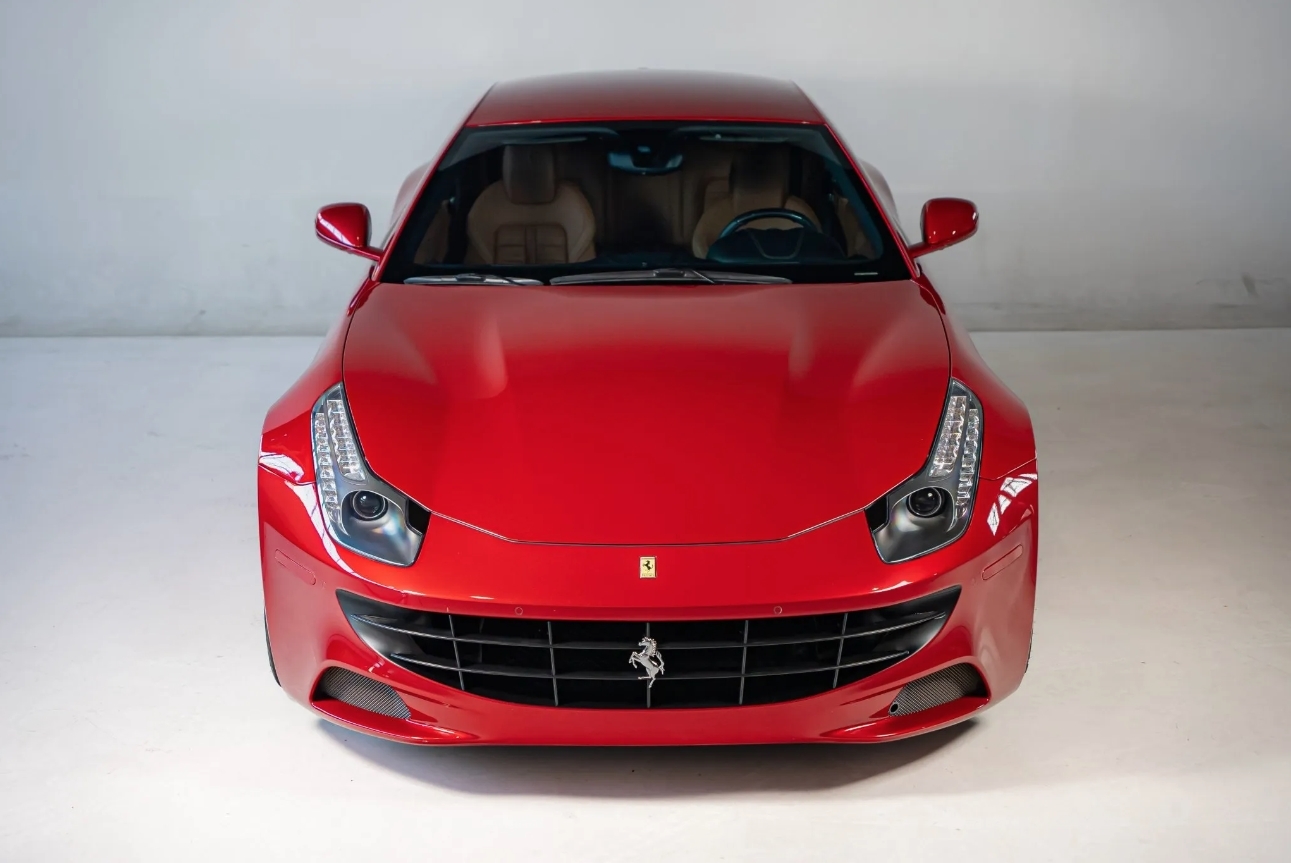
Photo by Bring a Trailer
That year, Ferrari also placed a stronger emphasis on its "Tailor-Made" customization program, encouraging buyers to take full advantage of Ferrari's expertise in crafting one-of-a-kind vehicles. Through this program, owners could create highly personalized FFs that reflected their personal style and preferences, making each car distinct.
The starting price for the 2014 Ferrari FF remained the same as the previous year approximately $300,000.
2015 Ferrari FF
In 2015, Ferrari introduced Apple CarPlay as an optional feature for the FF, providing enhanced smartphone connectivity and greater convenience for drivers. This integration allowed users to access key functions of their iPhones, such as navigation, music, and calls, directly through the car's infotainment system, making the driving experience more seamless and tech-friendly.
Ferrari also focused on weight reduction efforts in 2015, utilizing lighter materials in certain non-essential parts of the FF. These small adjustments resulted in minor weight savings, which in turn improved both fuel efficiency and handling, making the car more responsive without compromising its luxurious feel.
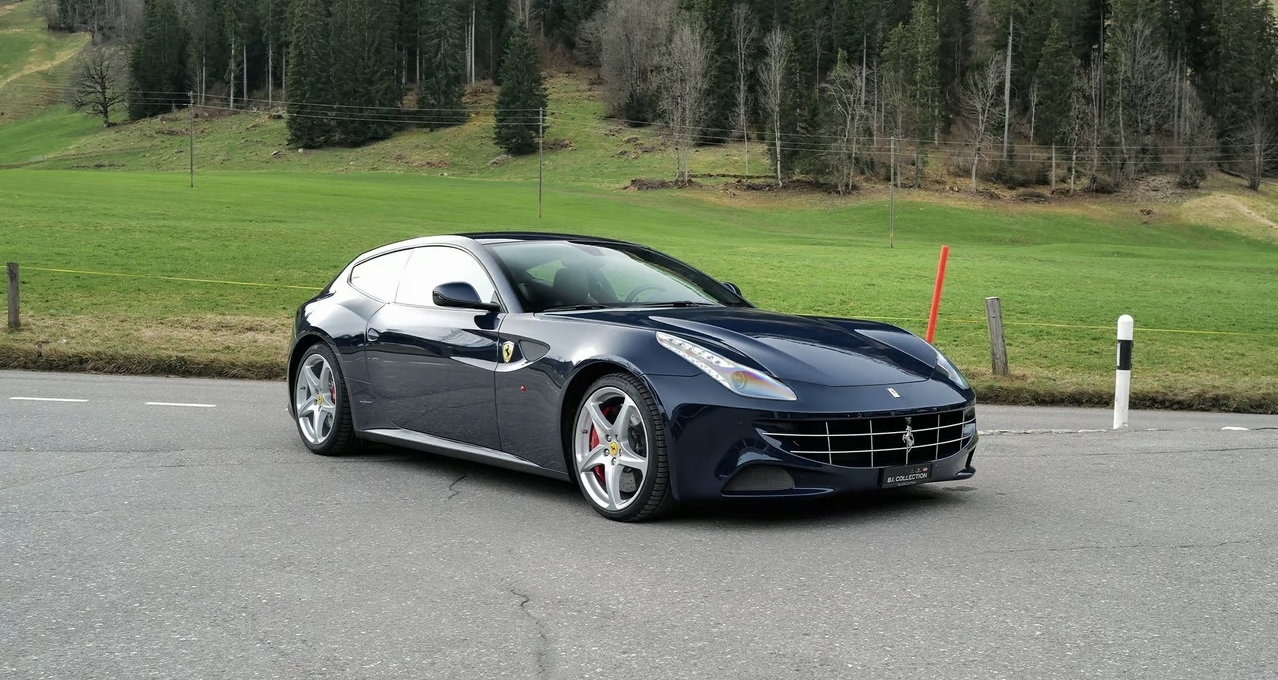
Photo by Classic Driver
Additionally, Ferrari made performance tweaks to the FF, specifically refining the electronic differentials and 4RM (four-wheel-drive) system. These adjustments allowed for smoother, more refined handling, particularly under dynamic driving conditions.
The starting price for the 2015 Ferrari FF remained the same as the previous year approximately $300,000.
2016 Ferrari FF
In 2016, the Ferrari FF reached its final production year as it was replaced by the Ferrari GTC4Lusso. This marked the end of the FF's run, making way for its successor, which debuted at the 2016 Geneva Motor Show. The GTC4Lusso was essentially an evolution of the FF, maintaining the same general layout and mechanical components but introducing several improvements.
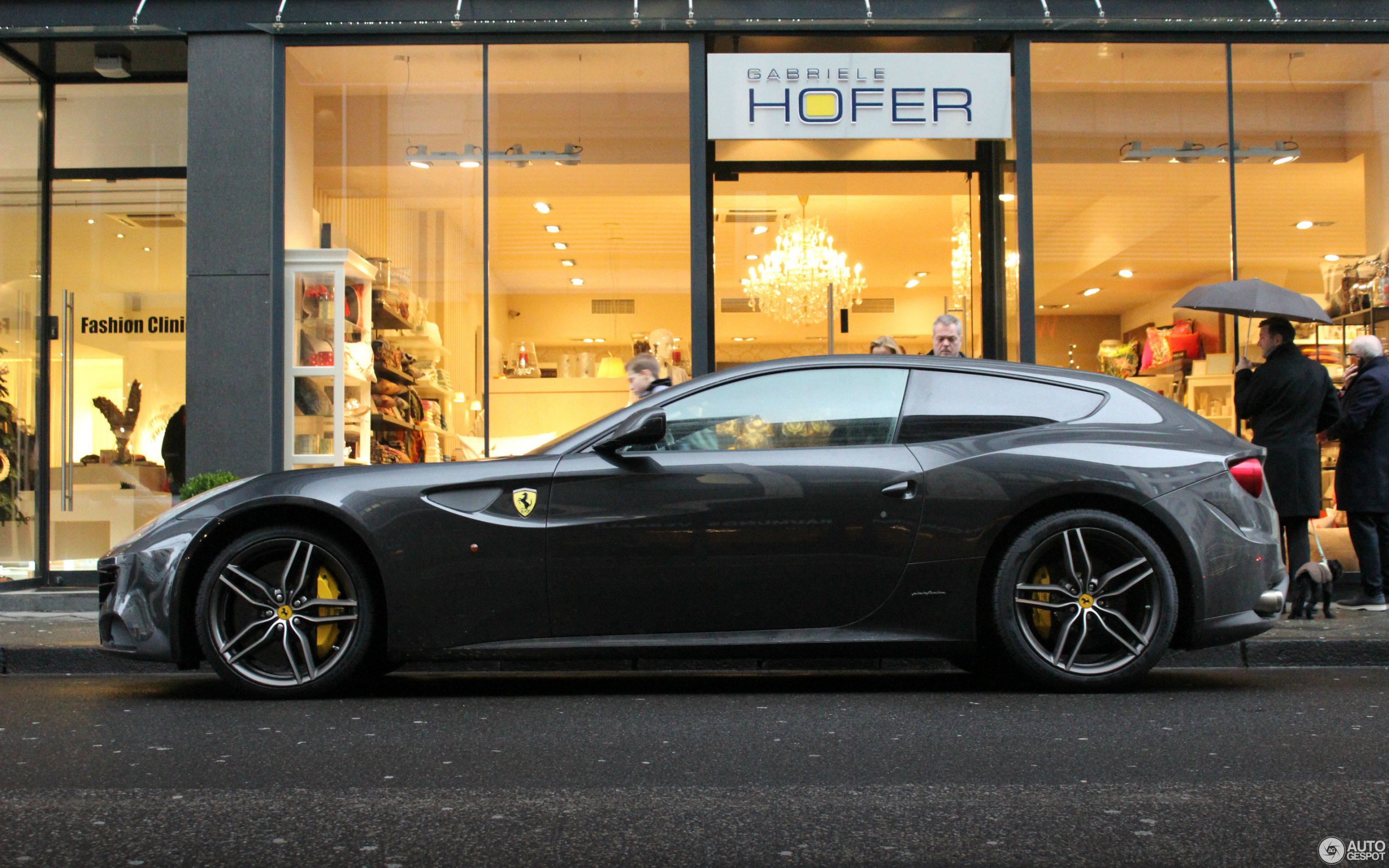
Photo by FerrariChat
These included a refreshed design, a more advanced four-wheel-drive system known as 4RM-S, and an upgraded interior, further enhancing the car's appeal as a luxurious and high-performance grand tourer.
The starting price for the 2015 Ferrari FF remained the same as the previous year approximately $300,000.
Ferrari FF Common Problems
The Ferrari FF like many exotic vehicles, it has its share of common problems. While most owners are drawn to the FF for its powerful V12 engine and all-wheel-drive capabilities, some have reported recurring issues that can affect the overall ownership experience.
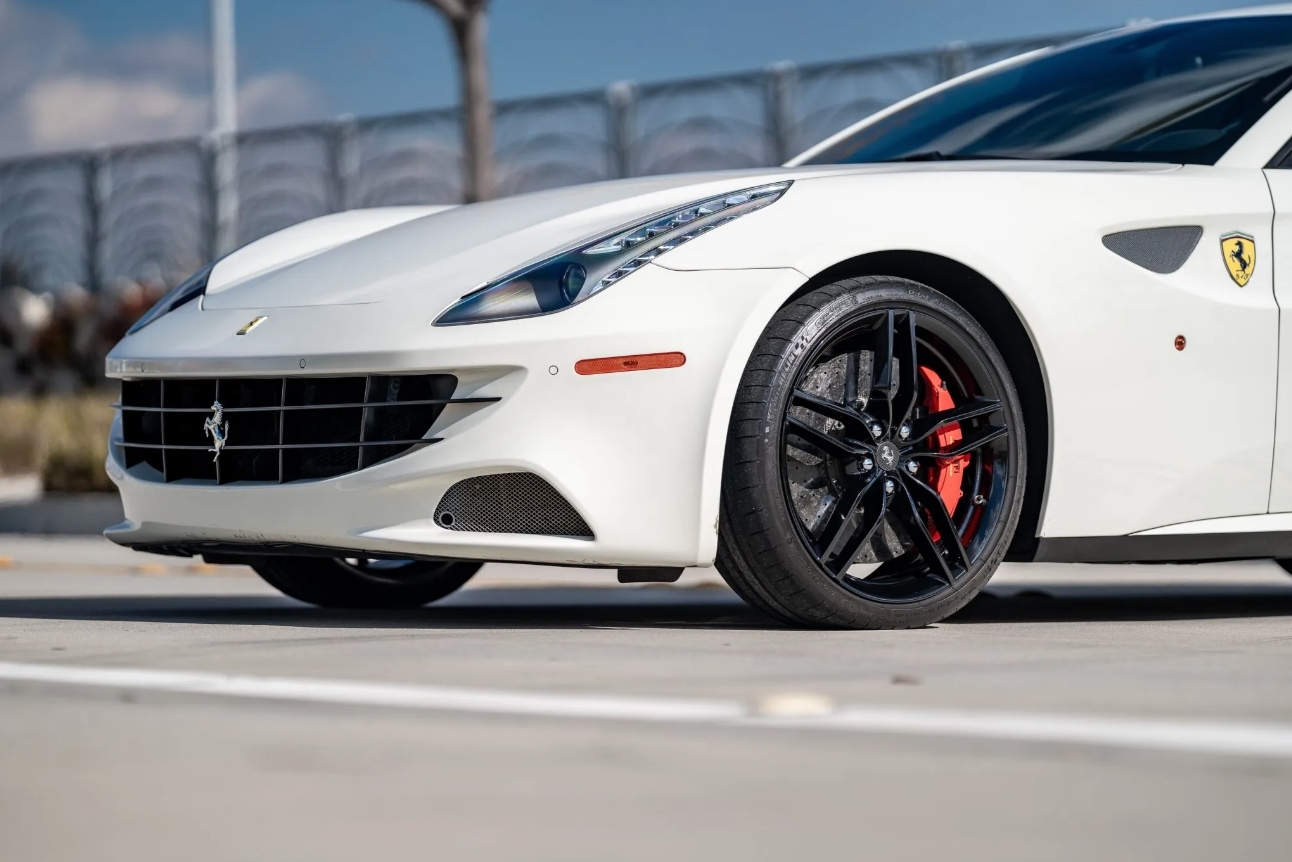
Photo by Bring a Trailer
Keep in mind, that it is essential that all cars, even supercars, can have issues and it is crucial to perform a Pre-Purchase Inspection (PPI) from an authorized dealer or experienced independent mechanic to reveal all issues.
Power Transfer Unit (PTU) Issues: One of the most significant and costly problems reported with the Ferrari FF is related to the Power Transfer Unit (PTU), which controls the car's unique all-wheel-drive system. Failures in the PTU, typically caused by internal hydraulic seal issues, have been reported. This problem can be expensive to repair, though some specialists can rebuild the PTU with upgraded parts.
Electrical System Failures: Owners have reported various electrical system gremlins, including "Manettino failure" (issues with the driving mode selector), TPMS (Tire Pressure Monitoring System) errors, and complete electrical failures. Often, these problems are linked to a weak or faulty battery, and installing a higher-quality aftermarket battery has sometimes resolved these issues.
Sticky Buttons: A common cosmetic issue with Ferrari models, including the FF, is the deterioration of interior buttons and switches, often referred to as "sticky buttons." This occurs when the plastic coating on the buttons becomes tacky over time, particularly in warmer climates.
Oil Pan Leaks: The Ferrari FF is prone to oil pan seepage, which is a relatively common issue. Although it doesn’t always lead to severe problems, it’s something to watch out for, especially during pre-purchase inspections.
Gearbox Problems: Some FFs have experienced gearbox issues, although these are relatively rare. When they do occur, the solution often involves replacing the entire gearbox. Fortunately, many Ferrari FF owners have reported smooth performance, but it’s a potential issue to keep in mind.
Recalls
2012-2016 Ferrari FF vehicles
Service brakes, hydraulic (Recall no. 22V536000)
The brake fluid reservoir cap may not vent properly, creating a vacuum inside the brake fluid reservoir, and resulting in a brake fluid leak that may lead to a partial or total loss of brake function. A loss of brake function can increase the risk of a crash.
2014-2016 Ferrari FF vehicles
Air bags: Frontal: Passenger side: Inflator module (Recall no. 19V006000)
These vehicles are equipped with certain air bag inflators assembled as part of the passenger frontal air bag modules used as original equipment or replacement equipment. In the event of a crash necessitating deployment of the passenger frontal air bag, these inflators may explode due to propellant degradation occurring after long-term exposure to absolute humidity and temperature cycling. An inflator explosion may result in sharp metal fragments striking the driver or other occupants resulting in serious injury or death.
2012 Ferrari FF vehicles that have not already had their passenger frontal air bag replaced.
Air bags (Recall no. 18V381000)
These passenger frontal air bag modules have air bag inflators that may explode in the event of a crash due to propellant degradation occurring after long-term exposure to absolute humidity and temperature cycling. An inflator explosion may result in metal fragments striking the vehicle occupants resulting in serious injury or death.
2013 Ferrari FF vehicles sold, or ever registered in the states of Alabama, California, Florida, Georgia, Hawaii, Louisiana, Mississippi, South Carolina, Texas, Puerto Rico, American Samoa, Guam, the Northern Mariana Islands (Saipan), and the U.S. Virgin Islands.
Air bags (Recall no. 18V040000)
These vehicles are equipped with certain air bag inflators assembled as part of the passenger frontal air bag modules used as original equipment or replacement equipment. In the event of a crash necessitating deployment of the passenger frontal air bag, these inflators may explode due to propellant degradation occurring after long-term exposure to absolute humidity and temperature cycling. An inflator explosion may result in sharp metal fragments striking the driver or other occupants resulting in serious injury or death.
2012 Ferrari FF vehicles sold, or ever registered, in Alabama, California, Florida, Georgia, Hawaii, Louisiana, Mississippi, South Carolina, Texas, Puerto Rico, American Samoa, Guam, the Northern Mariana Islands (Saipan), and the U.S. Virgin Islands.
Air bags (Recall no. 17V018000)
These vehicles are equipped with certain air bag inflators assembled as part of the passenger frontal air bag modules used as original equipment or replacement equipment. In the event of a crash necessitating deployment of the passenger frontal air bag, these inflators may rupture due to propellant degradation occurring after long-term exposure to absolute humidity and temperature cycling. An inflator rupture may result in metal fragments striking the vehicle occupants resulting in serious injury or death.
2015 Ferrari FF vehicles manufactured from December 19, 2014, to April 29, 2015
Air bags: Frontal (Recall no. 15V433000)
The affected vehicles may be equipped with a driver side air bag module that was improperly assembled. This can cause the air bag to deploy in a rotated orientation. In the event of a crash, the deployment of the driver's air bag in a rotated orientation increases the risk of injury.
Maintenance and Ownership Costs
While maintaining a Ferrari V12 has historically been associated with high costs. Common issues, such as Power Transfer Unit (PTU) failures and electrical system gremlins, can lead to costly repairs.
Routine expenses like tire replacements and brake servicing, particularly for the ceramic brakes, remain higher than those of standard luxury vehicles. Independent shops can help reduce costs, but ownership of the FF still demands a considerable budget for maintenance.
It is important to remember that regular maintenance and repairs will still be necessary, and the costs can vary depending on whether you take your car to a dealer or an independent mechanic.
Here is the suggested service schedule and intervals per Ferrari:
ANNUAL OR EVERY 6,000 MILES (Minor Service):
EVERY 3 YEARS OR 25,000 MILES (Includes 6,000 Mi Service Plus):
EVERY 6 YEARS OR 50,000 MILES (Includes 25,000 Mi Service Plus):
Here is a rough estimate of typical service costs associated with the Ferrari FF:
Options List
When purchasing a Ferrari FF, Ferrari offers an extensive list of customization features, allowing owners to personalize their FFs the way they want.

Photo by Collecting Cars
The options are broken down into several key areas:
For those prioritizing performance, carbon fiber packages are highly sought after. These include options for a carbon fiber steering wheel with integrated LED shift lights, carbon fiber dash and door inserts, and carbon fiber exterior details such as side mirrors and rear trim.
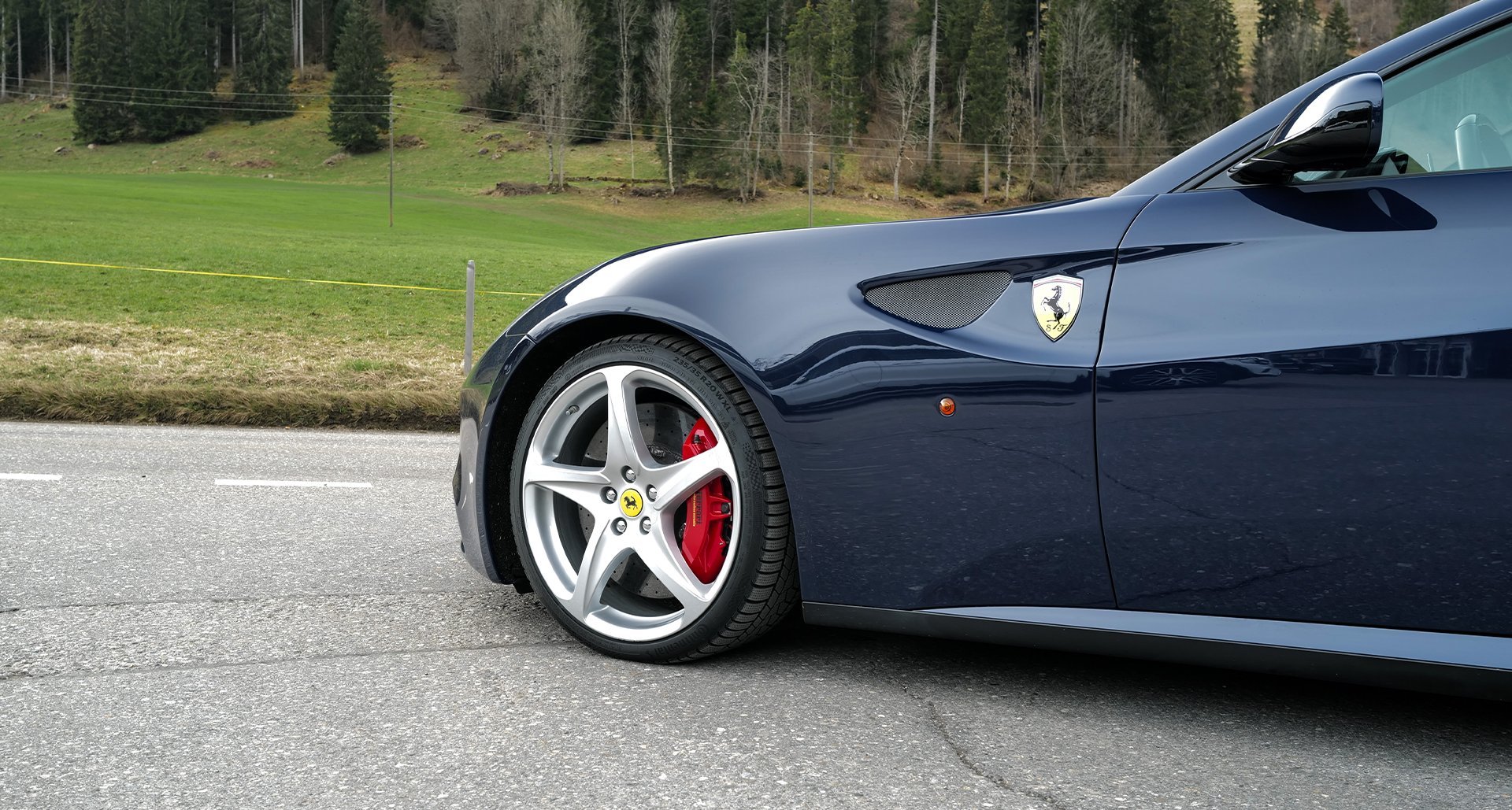
Photo by Classic Driver
On the exterior, Ferrari provides a wide range of paint finishes. In addition to the standard Ferrari colors like Rosso Corsa and Nero, the FF can be ordered in bespoke shades through Ferrari's Tailor-Made program. Metallic, matte, and special-order colors allow owners to stand out even further, while premium forged wheels and custom brake caliper colors add another layer of personalization.
Inside the cabin, the Ferrari FF offers leather upholstery in a variety of colors, with options to upgrade to full Alcantara or a combination of Alcantara and leather. Custom stitching, embroidered headrests, and contrasting color accents elevate the sense of craftsmanship. Rear-seat entertainment systems, high-end audio options, and Apple CarPlay were also available.
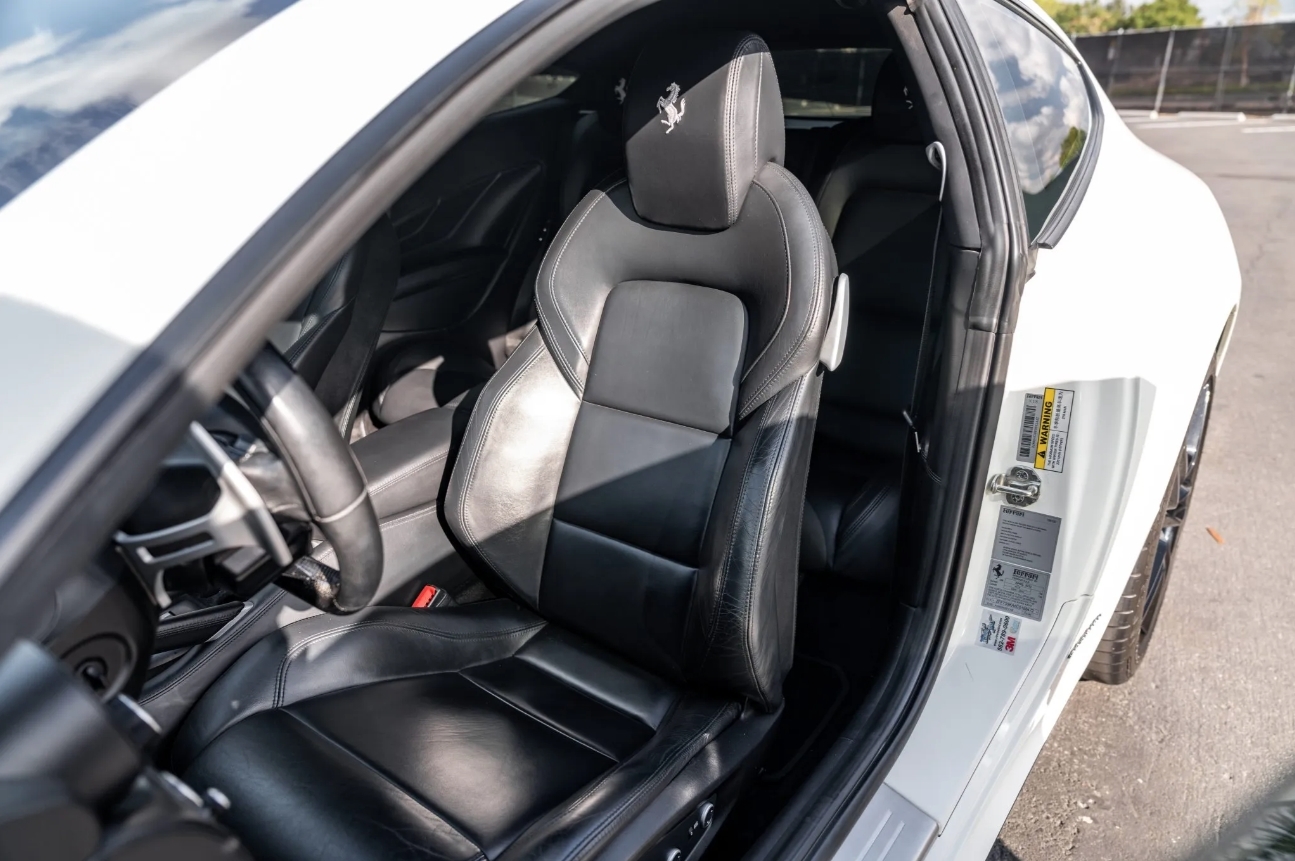
Photo by Bring a Trailer
For those looking to increase the FF's practicality, options like a panoramic roof and foldable rear seats can improve day-to-day usability without compromising its appeal. A luggage set tailored to fit the FF’s cargo area is another luxurious yet functional add-on that Ferrari offers.
When it comes to long-term value, FFs equipped with carbon fiber and bespoke options such as Tailor-Made cars tend to hold their value better, as these features are highly desirable in the resale market.
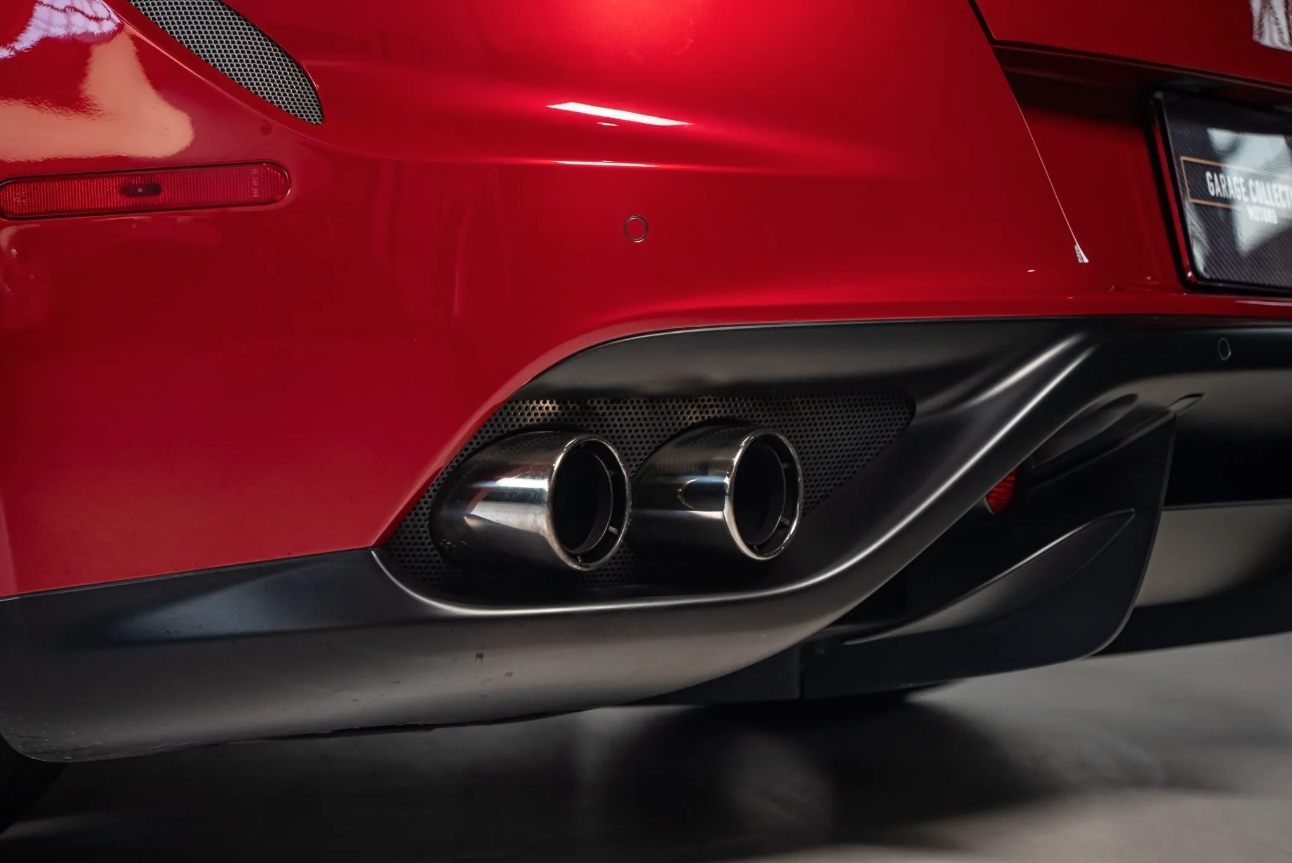
Photo by Bring a Trailer
The Tailor Made program takes customization to the highest level, providing an expansive array of personalization choices that stretch the boundaries of what's possible. It offers an extensive selection of paints, fabrics, leathers, and other materials, enabling customers to create a truly bespoke Ferrari that reflects their individual style and preferences to the finest detail.
Because of the strict approval requirements, cars that went through the Tailor Made program are considered highly desirable.
These cars usually command a higher premium in the market due to their exclusivity and uniqueness.
2011 Ferrari FF Options List
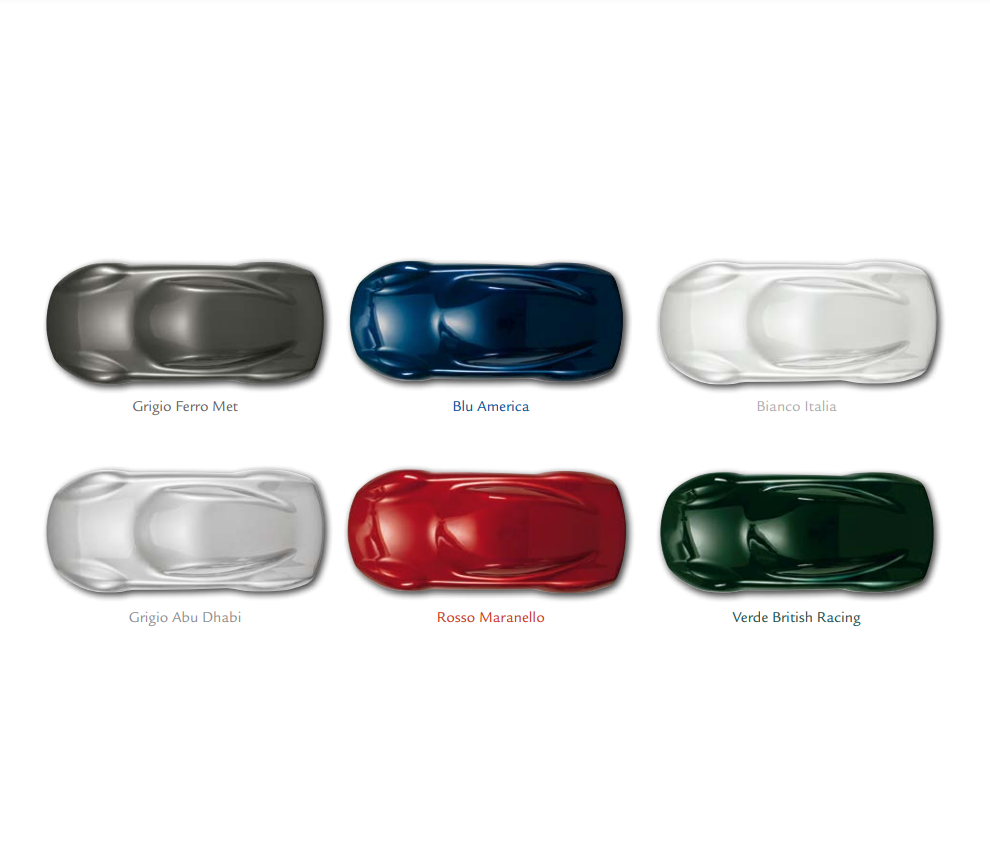
Key Options
Price and Values for Ferrari FF
The Best Ferrari FF to Buy
When it comes to choosing the best Ferrari FF, several key factors to consider.
For those seeking the best version of the FF, the 2016 model year stands out as an excellent choice.
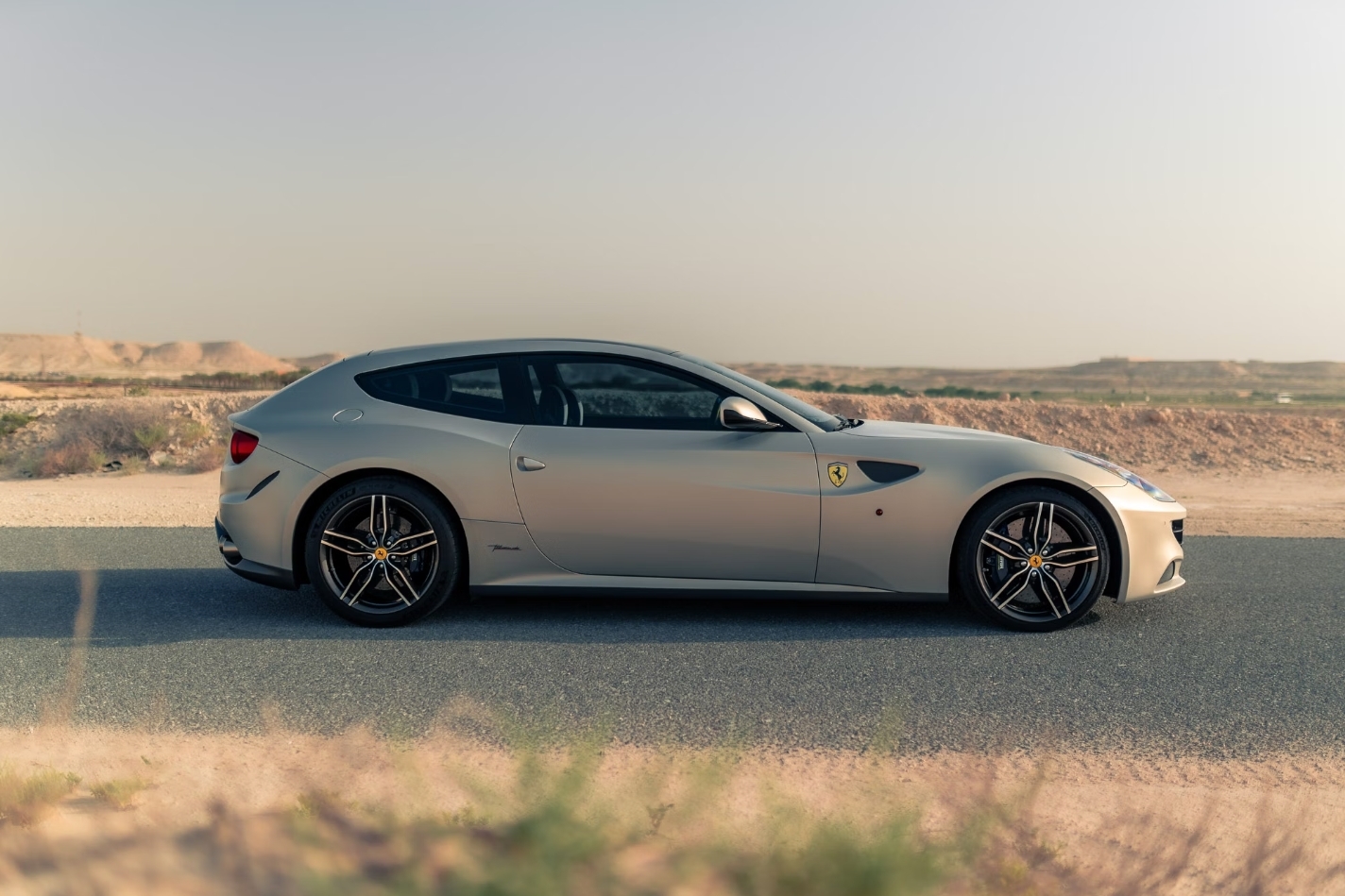
Photo by Collecting Cars
As the final year of production for the Ferrari FF before it was replaced by the GTC4Lusso, the 2016 model benefits from all the refinements and updates made during the FF's production run. This includes improved technology, such as the integration of Apple CarPlay, and various options like enhanced carbon fiber packages and premium interior materials.
In regards to market stability, all model years 2012 to 2016 are a safe choice.
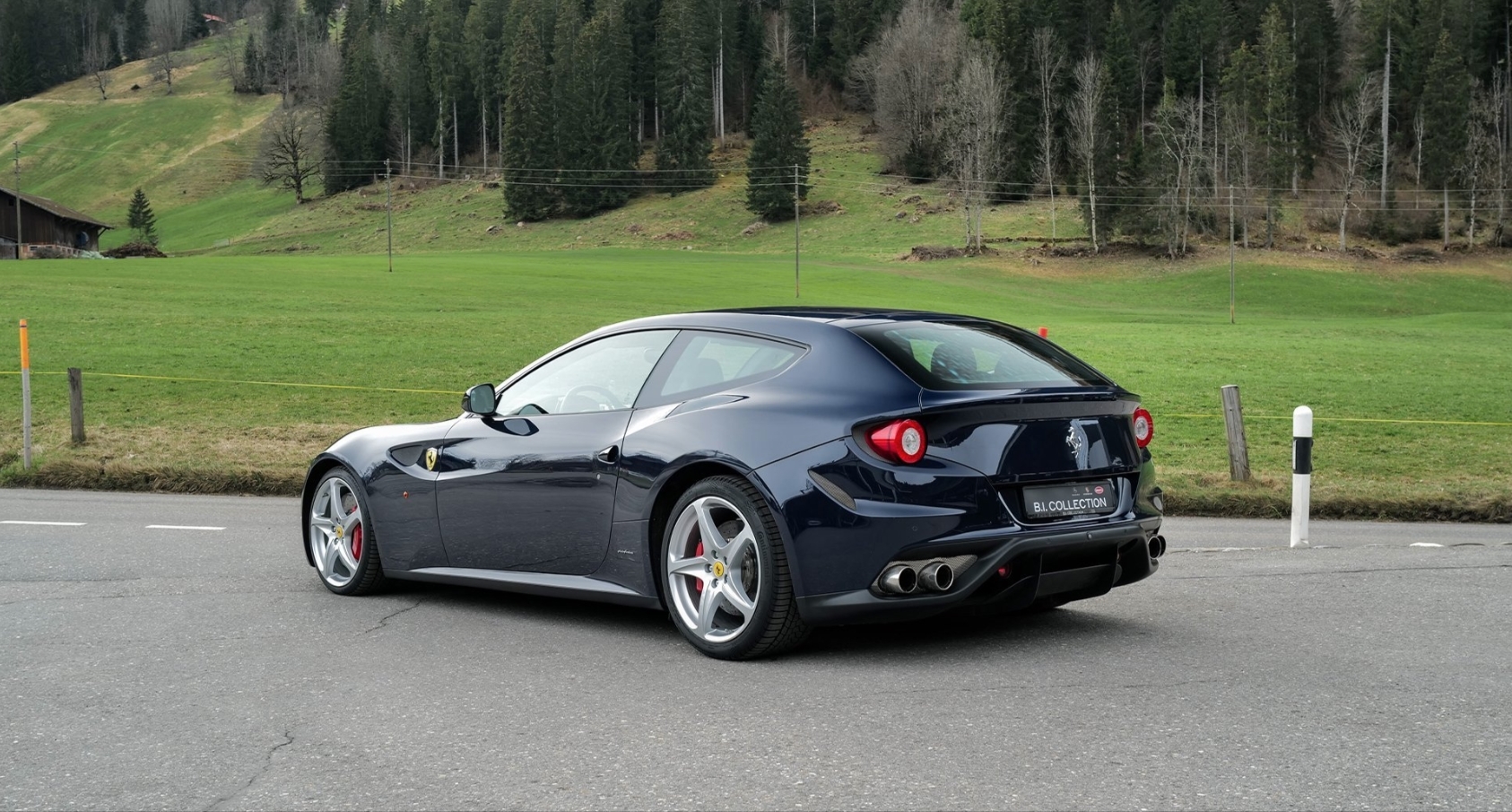
Photo by Classic Driver
Despite the Ferrari FF receiving only a few minor updates throughout its production, each model is regarded as a solid purchase. Whether you opt for an earlier model or a later version with newer features like Apple CarPlay, the Ferrari FF stands as a testament to Ferrari's commitment to excellence in both design and engineering, making any iteration a worthy addition to a collection or daily driving experience.
In addition to model year selection, the condition and mileage of the Ferrari FF are crucial factors to consider. Vehicles with low mileage and comprehensive service history are more likely to retain their value and provide a reliable ownership experience.
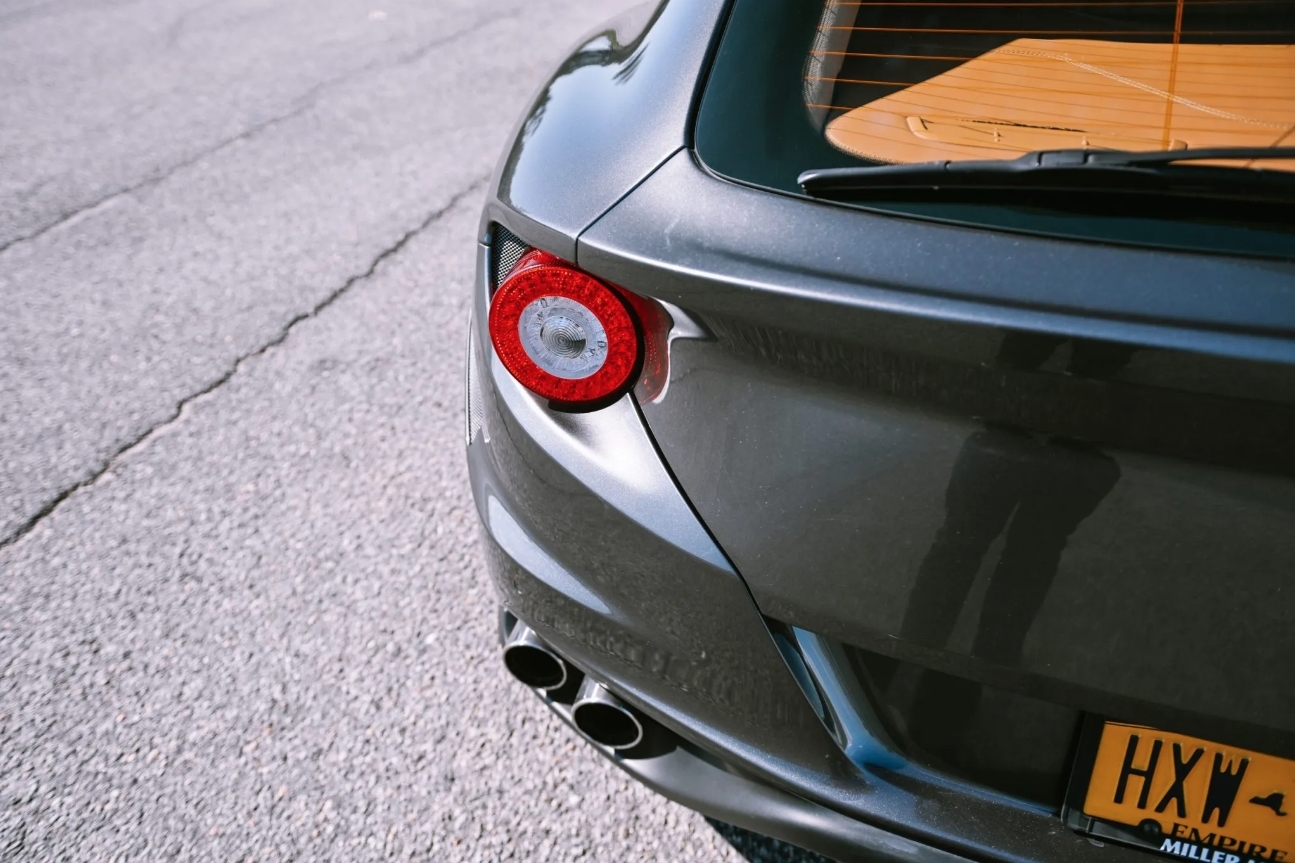
Photo by Bring a Trailer
The Ferrari 7-year maintenance program, available for models after 2012, also helps reduce long-term maintenance costs, making later models like the 2016 a more attractive option.
Therefore, it's important to do your research, compare prices, and look for well-maintained cars if you are considering purchasing an FF with the goal of not losing any money.
Conclusion
In summary, with a starting price of around $100,000 to $150,000, the Ferrari FF is an amazing option for those seeking a high-performance grand tourer that combines Ferrari’s renowned V12 power with practical all-wheel-drive capability.
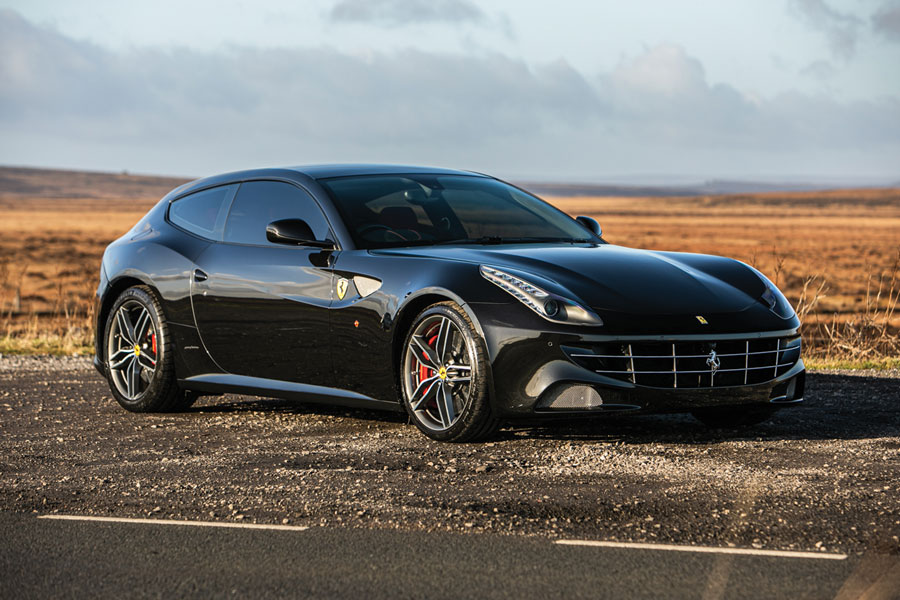
Photo by Sports Car Market
While there are alternatives like the Bentley Continental GT, Aston Martin Rapide and Porsche Panamera Turbo, the Ferrari FF sets itself apart through its innovative four-wheel-drive system, distinct shooting brake design, and exhilarating driving experience. The FF’s ability to perform both as a supercar and a practical, spacious tourer makes it a highly versatile option for collectors and enthusiasts alike.
For those who desire a balance of Ferrari’s legendary performance with the comfort of a daily driver, the Ferrari FF is an exceptional choice.
Look for models with the Carbon Fiber Driving Zone or panoramic roof
Model years 2012 to 2016 is good for market stability
Spec matters: Look for any FFwith Tailor Made options
Go for well-maintained vehicles with low mileage and complete service records
The post Ferrari FF Buyers Guide appeared first on Exotic Car Hacks.